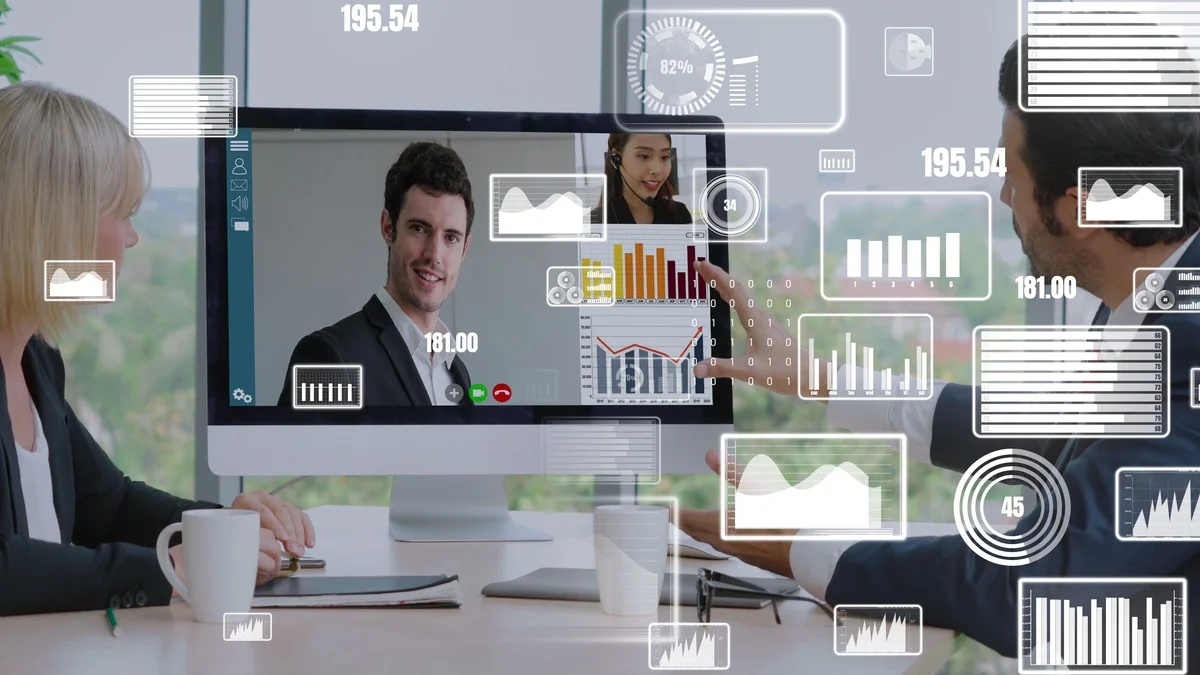Nexa Lab Blog – Linux is a widely used operating system in the IT industry, powering everything from servers to supercomputers. However, as Linux systems grow in complexity, monitoring becomes crucial to ensure optimal performance, security, and reliability.
Let’s learn more about Linux monitoring, including why it’s important, what its core components are, and some advanced techniques you might want to try.
Why Monitoring is Critical for Linux Systems
Monitoring is critical for Linux systems because it allows administrators to ensure that the hardware is functioning correctly, the server is up and running, and the server resources are sufficient for mission-critical applications and services to operate at peak performance.
This includes monitoring CPU, memory, disc capacity, and network performance, as well as tracking system load and process statistics. Monitoring these metrics is crucial for identifying potential issues before they become critical, such as high CPU utilisation, memory leaks, or disc I/O bottlenecks. Additionally, monitoring Linux servers helps to detect and prevent security threats by tracking log files and system events.
Linux performance monitoring is an essential component of any server administrator’s responsibilities, as poor server performance can lead to a poor user experience, lost revenue, and lost business.
Linux servers have a wide array of built-in tools that can help administrators identify performance issues and track system resources, including CPU usage, memory utilisation, disc I/O, and network usage. These tools, such as top, htop, vmstat, iostat, free, and iftop, can be used to monitor system performance in real-time and provide valuable insights into system resource utilisation.
In monitoring your network system, Simple Network Management Protocol (SNMP) is an important tool that can help you finish your job. Learn more about SNMP in our previous article. Click the link below to proceed.
Learn More: SNMP Monitoring: Definitions, Benefits, and its Difference with SSH
Core Components of Linux Monitoring
Monitoring your Linux system can help you avoid potential problems before they affect server performance. To do so, you must be aware of several components. The CPU, memory, and storage usage are among the most important components.
Aside from that, some of the important components to monitor on your Linux infrastructure are:
- Memory Usage: Monitoring memory usage is crucial to ensuring your applications have enough resources to run efficiently.
- CPU Usage: High CPU usage can indicate a problem with your applications or processes.
- Storage Usage: This includes monitoring disc space and Input/Output Operations per Second (IOPS). Running out of disc space can cause serious problems.
- Network Monitoring: This involves tracking data such as network usage, latency, packet loss, and more.
- System Logs: System logs provide a wealth of information about what’s happening on your system.
- Process Monitoring: This involves keeping an eye on the individual processes running on your system.
- Security Monitoring: This includes monitoring system logs, file integrity, and network traffic to identify potential security breaches.
- Performance Monitoring: This involves tracking various metrics such as load averages, context switches, and other indicators of system performance.
- Resource Utilisation: Monitoring resource utilisation like CPU, memory, disk space, and network traffic can help pinpoint bottlenecks and optimise resource usage.
- User Monitoring: Keeping track of user activity can help identify unauthorised access attempts or other potential security issues.
Remember, the right set of tools can make Linux monitoring much easier.
Cyberciti is adding quite helpful tips for monitoring Linux infrastructure by laying out some of the important commands that you can use, including top, vmstat, iostat, netstat, and dmesg.
With that command, you can get real-time insights into resource usage and system activity, especially for on-premise Linux infrastructure systems.
Monitoring Linux in a Cloud Environment
As more organisations migrate their Linux-based infrastructure to the cloud, the need for effective monitoring strategies has become increasingly important. In a cloud environment, monitoring Linux systems is generally typical of the on-premise one.
You’ll need to track system resources such as CPU, memory, disc space, and network traffic to identify potential issues before they become critical.
What distinguishes Linux cloud environment monitoring from traditional monitoring is the requirement to monitor servers and applications across the entire stack.
However, there are some similarities between the monitoring tools available. As previously stated, you can continue to use the command line to monitor a Linux cloud environment.
Aside from that, there are additional tools, such as integrated monitoring tools provided by a third party. These integrated monitoring tools typically include more advanced features and capabilities, such as real-time alerts and customisable dashboards.
Here are some of the important tools that can help you monitor your cloud Linux environment:
Command-Line Tools:
- top, vmstat, and iostat provide real-time insights into resource usage and system activity.
- iotop, dstat, nethogs, iftop, and monit are additional command-line tools that can be used for monitoring.
Integrated Monitoring Tools:
- Sumo Logic offers a Cloud Security monitoring and Analytics app for Linux, which ingests any distribution of Linux data to gain a better understanding of security threats and surface relevant insights.
- Dynatrace provides server monitoring of physical and virtual Linux hosts and cloud environments, offering real-time insights into CPU, memory, and network health metrics.
- OpenTelemetry is a unified log app that ingests distribution of Linux data to Sumo Logic via OpenTelemetry Collector, providing a comprehensive overview of security statistics relevant for Linux systems.
RMM software is another useful tool for monitoring your system. While important, the software will not function unless you use the RMM agents to deploy and collect data from your systems. Read more about RMM agents in our previous article. To learn more, please click the link below.
Learn More: RMM Agents: How it Works, Types, and Benefits
Advanced Monitoring Techniques
While the core components of Linux monitoring provide a solid foundation, there are several advanced techniques that can further enhance your monitoring capabilities and provide deeper insights into your system’s behavior.
Some key areas you mighht want to explore are:
1. Custom Metrics and Dashboards:
- Custom Metrics: Go beyond basic system metrics and create custom metrics that are specific to your applications and infrastructure. This allows you to track key performance indicators (KPIs) that are most relevant to your business goals.
- Custom Dashboards: Design custom dashboards that visualize the most important metrics for your team. This provides a centralized view of system health and performance, allowing you to quickly identify and address issues.
2. Distributed Tracing and Profiling:
- Distributed Tracing: Track the flow of requests across multiple services and identify bottlenecks and performance issues. Tools like Jaeger and Zipkin are popular choices for distributed tracing.
- Profiling: Analyze the performance of your applications at the code level to identify performance bottlenecks and optimize code execution. Tools like perf and gprof can be used for profiling.
3. Anomaly Detection and Root Cause Analysis:
- Anomaly Detection: Implement algorithms to automatically detect anomalies in your system’s behavior. This can help you identify potential issues before they become critical.
- Root Cause Analysis: Use advanced tools and techniques to identify the root cause of performance issues. This allows you to fix the underlying problem instead of just treating the symptoms.
4. Synthetic Monitoring and Load Testing:
- Synthetic Monitoring: Simulate user traffic to proactively test the performance and availability of your applications and infrastructure. Tools like k6 and Gatling can be used for synthetic monitoring.
- Load Testing: Perform load tests to understand how your system behaves under heavy load. This helps you identify potential bottlenecks and ensure your system can handle peak demand.
5. Container and Cloud Monitoring:
- Container Monitoring: If you’re using containerized environments like Docker and Kubernetes, implement monitoring tools specifically designed for containers. Tools like Prometheus and Grafana can be extended to monitor containerized applications.
- Cloud Monitoring: If you’re using cloud platforms like AWS, Azure, or GCP, leverage their built-in monitoring services to gain insights into your cloud resources.
Additional Considerations:
- Security Monitoring: Integrate security monitoring into your overall monitoring strategy to identify and respond to potential security threats.
- Log Correlation and Analysis: Use advanced log analysis techniques to correlate events from different sources and identify patterns that may indicate potential issues.
- Machine Learning and AI: Explore the use of machine learning and AI to automate tasks like anomaly detection, root cause analysis, and predictive maintenance.
Implementing these advanced techniques can help you gain a deeper understanding of your system’s behavior and proactively address issues before they impact your users or business.
Remember, the best monitoring approach is the one that are tailored to your specific needs and infrastructure.
Conclusion
Effective Linux monitoring is essential for maintaining peak system performance, security, and dependability. Administrators can gain a better understanding of their systems and make data-driven decisions by understanding the fundamental components of Linux monitoring, leveraging advanced techniques, and utilising specialised tools.
For a managed service provider (MSP), this level of monitoring is crucial for ensuring the smooth operation of client systems and meeting service level agreements.
However, monitoring only is not enough – it is important for MSPs to also have skilled technicians who can interpret the data collected by the system and take appropriate actions to resolve issues in a timely manner.
That’s why you should consider integrating your monitoring system with professional service automation (PSA) software.
Do you want to improve your MSP operations efficiency but don’t know where to start?
Introducing Nexalab App Fusion!
Nexalab App Fusion is a comprehensive integration platform that easily connects your choice of monitoring tools with PSA software like Datto Autotask, and other critical tools such as CRM software like Hubspot to optimise your troubleshooting processes and improve overall service delivery.
With App Fusion, you can easily track and manage network performance, automate ticketing and billing processes, and ensure timely resolution of issues for your clients, ultimately boosting your MSP’s efficiency and profitability. Contact us to learn more about Nexalab App Fusion.




